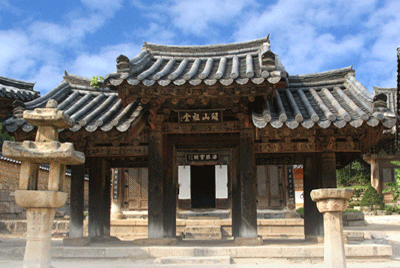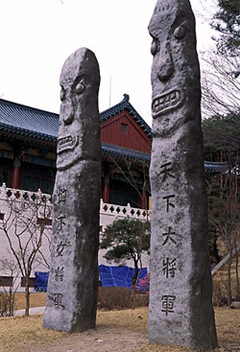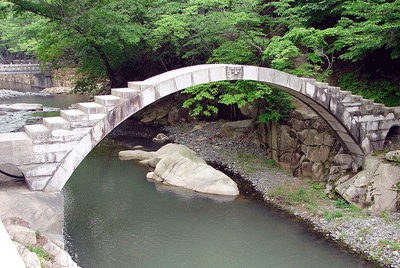Tongdosa is a head temple of the Jogye Order of Korean Buddhism and in the southern part of Mt. Chiseosan near Yangsan City, Gyeongsangnam-do, South Korea.
Tongdosa is one of the Three Jewel Temples of Korea and represents the Buddha; (Haeinsa, also located in Gyeongsangnam-do, represents the dharma or Buddhist teachings; and Songgwangsa in Jeollanam-do represents the sangha or Buddhist community.)
Tongdosa is famous because there are no statues outside of the main (Sakyamuni) Buddha at the temple because the “real shrines of the Sakyamuni Buddha” (relics) are preserved at Tongdosa. Courtyards at the temple are arrayed around several stupas (pagodas) that house the Buddha’s relics.
Tongdosa was established by the monk Jajang after returning from China in 646 CE, during the reign of Queen Seondeok of Silla. It thrived throughout the Unified Silla and Goryeo periods, when Buddhism was the state religion, and remained strong even in the Joseon Dynasty.
Tongdosa is reputeded to house several relics of the Sakyamuni Buddha himself, including a robe, a begging bowl, and a bone from his skull, all relics that Jajang brought back from the travels to China he undertook in 636 to study with ten other monks there.
Only one building, the Daeungjeon (main Dharma worship hall), survived the Japanese invasions of Korea in the late 16th century; the other buildings were rebuilt later that period. In the mid 15th century at the height of its prosperity, Tongdosa is said to have had hundreds of buildings and thousands of monks. For over 1,300 years Tongdosa’s Beopdeung (temple candle) has never gone out.
Tongdosa is often called “The temple without a Buddha” because it contains no outdoor statues of the Buddha, rather it is arranged around several stupas which contain Jajang’s relics of the historical Buddha.
Tongdosa is Korea’s largest temple. The road that meanders up to the temple wanders through a forest called “Pine trees dancing in the wind”. A total of 65 buildings separately house a shrine for virtually every major Buddhist deity. The temple does not seem especially large because many of the buildings are dispersed throughout the surrounding mountainside. 13 hermitages can be found on the temple complex grounds. The buildings are varied in architectural style with many left unpainted or faded. One of the buildings contains a fine mural depicting a boat escorting the deceased into paradise.
Approaching the entrance the first bridge one sees is Samseongbanwol – Three Arch Bridge – meaning three stars and a half moon, sometimes also called the One Mind Bridge. The configuration of the Chinese letter is composed of four strokes, when applying the strokes to the name of the bridge, the long stroke stands for a half moon and the other strokes, three stars.
Tongdosa is one of five temples in Korea, known as Jeokmyeolbogung, which enshrine the relics of the Buddha that Jajang returned from China. Tongdosa is the ‘Buddha Jewel Temple’ because it enshrines Sari Jinsin (the Buddha’s relics) in the Geumgang Gyedan (Diamond Alter), a platform for the ceremony prevailing Buddhist precepts, behind Daeungjeon (main Dharma Hall).
There is no image of the Buddha or Bodhisattvas, as is typically found in a worship hall, in Tongdosa’s . Instead a Buddhist altar that spans east to west inside along the front with a window, in the place a Buddha image, looks out on the Geumgang Gyedan (Diamond Alter).
Tel: 055-382-7182
Web: www.tongdosa.or.kr
(From: wikipedia)







